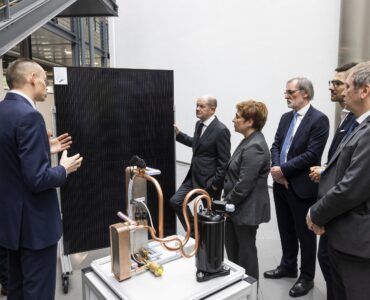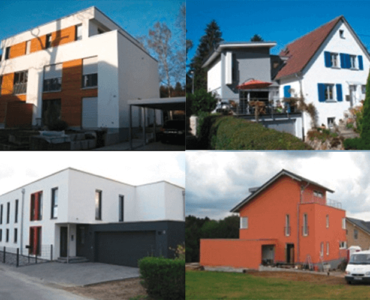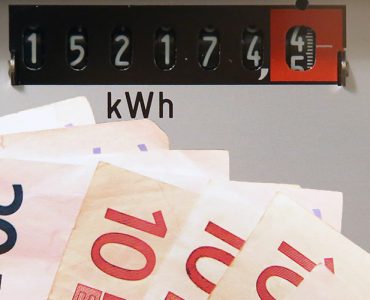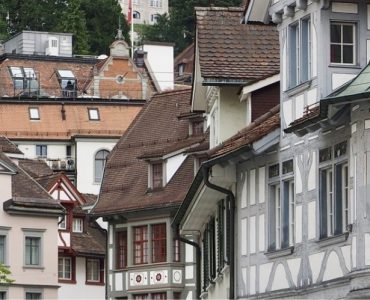Episode 3 of a series on heat pumps in existing buildings
Clearly, the less energy needed to create a comfortable indoor climate, the better. That’s why renovation measures to reduce heating energy demand always make sense. This applies to all heating systems, not just heat pumps.
For various reasons, (full) refurbishment of buildings is sometimes not possible in the short term. Fortunately, houses do not have to be extensively renovated in order to allow for an installation of a heat pump. Of course, the lower the heat losses, the more efficient a heat pump can operate. Both, the residents’ wallets and the ecology, benefit from using as little heating energy as possible. However, the decisive factor for the use of heat pumps is the required heating circuit temperatures.
In many older houses, the heat transfer systems are oversized. As a result, when the heating system is replaced, it is usually possible to lower the flow temperature set in the system and operate the heat pump more efficiently. In many other cases, small renovation steps have already been taken, such as replacing the windows. This is often sufficient to use a heat pump efficiently.
Efficiency can also be enhanced with the help of additional, relatively inexpensive short-term measures. These include, for example, the replacement of individual radiators. Modern radiators can transfer the same amount of heat to the room at significantly lower heating circuit temperatures. Such simple renovation measures can often be the first steps in a medium-term refurbishment roadmap to achieve further efficiency improvements.
Another common prejudice is that heat pumps can only be used with underfloor or wall heating. However, this is not only physically incorrect, but has also been disproved by thousands of heat pump systems implemented with radiators. Radiators do not necessarily require very high flow temperatures. In our field study (written in German), only a handful of the air-to-water heat pump systems that were equipped with radiators only achieved average heating circuit temperatures above 45°C. In most systems, temperatures were even below 40°C.
Do existing buildings with heat pumps get pleasantly warm at all?
What matters the most to residents: is the room temperature comfortable, even if it is very cold outside? In the first two weeks of February 2021, it was quite cold in Germany. A very recent evaluation of 20 air-to-water heat pump systems, continuously monitored by Fraunhofer ISE, has shown the following: The average outdoor air temperature for the evaluated heat pump systems was -3.6°C during this very cold period (there have only been 5 months with average temperatures below -3.5°C in Germany in the last 50 years).
The efficiency of 17 systems (the three best in fully renovated buildings were not taken into account) was 2.3 during this period, with a range between 1.6 and 2.8. That is to say: even with such cold weather, more than twice as much heat could be extracted from the ambient air with each kilowatt-hour of electricity. The device with the lowest efficiency had to operate with the lowest average outside air temperature of -10.2°C. Additional electric back-up heaters were used in only five plants and were taken into account when determining efficiency. The desired heating energy was provided by all plants.
The fact that heat pumps can be used successfully even at very low outside temperatures is also shown by the fact that they are already widely used in countries with much harsher winters, such as in Scandinavia. There are products on the market that can even operate at -25°C without a additional back-up heaters.
What happens if a heat pump is installed first and renovation is done later?
There is an additional question regarding refurbishment : What happens if a heat pump is installed first and renovation is done later? Will the heat pump be oversized? A subsequent refurbishment will primarily lead to an increase in heat pump efficiency. Heat pumps provide the required heat in both mild autumn and frosty winter, which means they can react very flexibly throughout the heating period. Therefore, even oversizing (except in extreme cases) is not a major technical problem. In addition, heat pumps with inverter technology, which enable the heat pump’s output to be controlled and thus efficiently provide a flexible output range, have now become almost standard.
This shows that heat pumps can also be used in existing buildings. Although it is always better to renovate first, this is not a prerequisite. In the vast majority of cases, a good heat pump solution can also be implemented in unrenovated (or slightly refurbished) buildings. There are many installers who specialize in such cases.
But what does “good/reasonable” application of a heat pump mean? The two most important evaluation criteria are ecology and economy. Both aspects will be considered separately in later episodes of the series. In the next episode, we will first take a closer look at the results of our field test of heat pumps in existing buildings.
Further reading:
Overview on the range of applications for heat pumps.
Episode 2 of the series on heat pumps in existing buildings: Are heat pumps able to deliver sufficiently high temperatures in the heating circuit?
Header picture:
Family house in Freiberg, Germany. © Bundesverband Wärmepumpe (BWP) e.V. More information on the project (in German)
This blog post is financially supported by the Climate Neutrality Foundation.





I think it will help all readers a litle if you could edit into the end of every post the link to the next one, to save hunting for the main page again.
Good clear content, thank you!
Rgds
Damon
Thank you, Marek. You answered questions in my mind in a simple way with facts and figures.